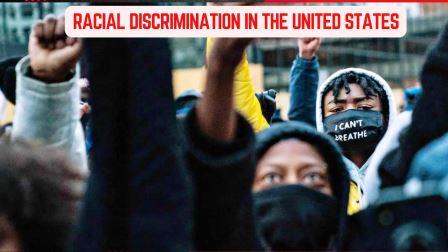Racial discrimination in the United States remains a pervasive and deeply rooted issue, despite significant progress in recent decades. From systemic injustices in the criminal justice system to subtle biases in workplaces and educational institutions, racial disparities continue to affect the lives of millions of Americans. This blog post will explore the current challenges of racial discrimination, examining its manifestations in various aspects of society and the ongoing calls for justice and equality.
Systemic Racism in the Criminal Justice System
One of the most glaring examples of racial discrimination in the United States is the disproportionate impact of the criminal justice system on Black and other minority communities. Studies consistently show that Black individuals are more likely to be arrested, convicted, and sentenced to longer prison terms than their white counterparts for similar offenses. This disparity can be attributed to factors such as racial profiling, implicit biases among law enforcement and prosecutors, and limited access to legal resources for marginalized communities.
Disparities in Education and Employment
Racial discrimination also persists in the realms of education and employment. Despite progress in recent years, Black and other minority students continue to face significant challenges in achieving educational equity. This includes disparities in school funding, access to quality teachers, and opportunities for higher education. In the workplace, racial biases can lead to discrimination in hiring, promotions, and compensation, resulting in unequal pay and limited career advancement for minority employees.
Healthcare Disparities and Health Outcomes
Racial disparities in healthcare access and outcomes are another pressing concern in the United States. Studies have consistently shown that Black and other minority individuals are more likely to experience disparities in the quality of care, preventive services, and overall health outcomes. These disparities can be attributed to factors such as socioeconomic status, implicit biases among healthcare providers, and limited access to culturally competent care.
Housing Discrimination and Segregation
Housing discrimination has been a persistent issue in the United States for decades. While significant progress has been made to address overt forms of discrimination, more subtle forms of bias, such as redlining and racial steering, continue to contribute to racial segregation and limited opportunities for homeownership in communities of color.
The Fight for Racial Justice
In response to the ongoing challenges of racial discrimination, activists and, address racial disparities in education and employment, improve healthcare access for minority communities, and combat housing discrimination.
Conclusion
Racial discrimination in the United States remains a complex and multifaceted issue that requires ongoing attention and action. While significant progress has been made in recent decades, it is clear that much work remains to be done to achieve a truly just and equitable society. By acknowledging the existence of racial discrimination, addressing its root causes, and working towards systemic change, we can create a more inclusive and prosperous future for all Americans.
Read Also- Phil Donahue: The Voice of Daytime Television and Pioneer of Modern Talk Shows

